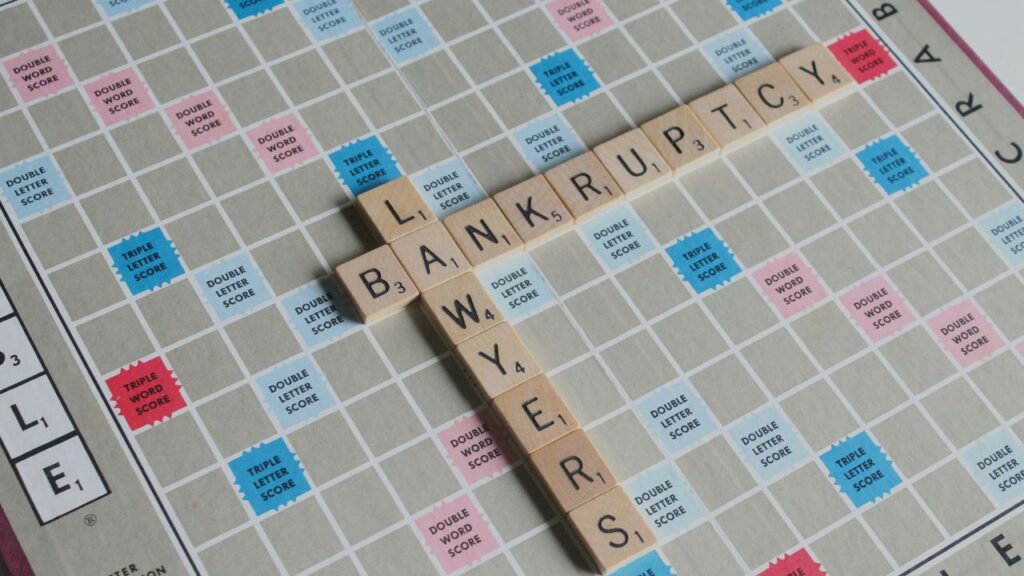Navigating the complexities of bankruptcy can be a daunting task, especially when faced with choosing between Chapter 7 and Chapter 11 bankruptcy. These two financial relief options offer distinct pathways for individuals and businesses in distress, each with its own set of processes and long-term implications. Understanding the bankruptcy differences is essential to making an informed decision that aligns with your financial goals and eligibility. In this article, we will delve into the intricacies of both Chapter 7 bankruptcy and Chapter 11 bankruptcy, providing insights into their impact on credit and debt repayment. Armed with this knowledge, you can confidently approach the bankruptcy process, knowing which option may better support your journey toward financial stability.
Understanding Bankruptcy Basics
Bankruptcy can be a complex and often misunderstood topic. This section will explore the fundamental concepts of bankruptcy, its importance as a financial relief option, and the eligibility criteria for filing.
Key Bankruptcy Concepts
Bankruptcy is a legal process designed to help individuals and businesses eliminate or repay their debts under the protection of the bankruptcy court. It’s crucial to understand the core concepts before considering this option.
Automatic stay is one of the most important aspects of bankruptcy. It immediately stops most creditors from pursuing collection efforts, providing immediate relief to the debtor.
Discharge refers to the elimination of certain debts, giving the debtor a fresh financial start. However, not all debts are dischargeable, and the specifics vary between Chapter 7 and Chapter 11 bankruptcies.
Bankruptcy also involves the concept of exempt property, which allows debtors to keep certain assets necessary for living and working, even in liquidation scenarios.
Importance of Financial Relief
Financial relief through bankruptcy can be a lifeline for those drowning in debt. It offers a structured way to address overwhelming financial obligations and regain control.
For individuals, bankruptcy can halt foreclosures, stop wage garnishments, and provide a path to financial stability. It allows for a fresh start, free from the burden of unmanageable debt.
Businesses can use bankruptcy as a tool for reorganization, allowing them to continue operations while restructuring their debts. This can preserve jobs and potentially return the company to profitability.
However, it’s important to note that bankruptcy should be considered a last resort. The long-term impacts on credit and future financial opportunities make it a serious decision that requires careful consideration.
Bankruptcy Eligibility Criteria
Eligibility for bankruptcy depends on various factors, including the type of bankruptcy being filed and the financial situation of the debtor. Understanding these criteria is crucial before proceeding.
For Chapter 7 bankruptcy, individuals must pass a means test that compares their income to the median income in their state. If their income is below the median, they generally qualify for Chapter 7.
Businesses can file for Chapter 7, but if they wish to continue operations, Chapter 11 is typically more appropriate. There’s no debt limit for Chapter 11, but the process is more complex and expensive.
Both chapters require completion of credit counseling from an approved provider within 180 days before filing. Additionally, debtors must provide detailed financial information, including income, expenses, assets, and liabilities.
Comparing Chapter 7 and Chapter 11
Understanding the differences between Chapter 7 and Chapter 11 bankruptcy is crucial for making an informed decision. This section will break down the processes involved in each and highlight the key distinctions.
Chapter 7 Bankruptcy Process
Chapter 7 bankruptcy, often referred to as “liquidation bankruptcy,” is typically a straightforward process designed to give individuals a fresh financial start. Here’s an overview of the key steps:
- File a petition: The debtor submits a petition to the bankruptcy court, along with detailed financial information.
- Automatic stay: Upon filing, an automatic stay goes into effect, halting most collection activities.
- Appointment of trustee: The court appoints a trustee to oversee the case and liquidate non-exempt assets.
- Meeting of creditors: The debtor attends a 341 meeting, answering questions about their financial situation under oath.
- Asset liquidation: The trustee sells non-exempt assets to pay creditors.
Discharge of debts typically occurs 3-4 months after filing, eliminating most unsecured debts. However, certain debts like student loans and recent taxes usually can’t be discharged.
Chapter 11 Bankruptcy Process
Chapter 11 bankruptcy, known as “reorganization bankruptcy,” is more complex and typically used by businesses, though individuals can file in some cases. The process involves:
- Filing a petition: The debtor (now called “debtor in possession”) files a petition and comprehensive financial information with the court.
- Automatic stay: Similar to Chapter 7, an automatic stay takes effect upon filing.
- Develop reorganization plan: The debtor creates a plan to restructure debts and continue operations.
- Creditors’ committee: In larger cases, a committee represents the interests of unsecured creditors.
- Plan confirmation: The court must approve the reorganization plan, often after negotiations with creditors.
Throughout this process, the business typically continues to operate. The goal is to emerge from bankruptcy as a financially viable entity, having restructured its debts and operations.
Bankruptcy Differences Explained
While both Chapter 7 and Chapter 11 provide debt relief, they differ significantly in their approach and outcomes. Here’s a comparison of key aspects:
| Aspect | Chapter 7 | Chapter 11 |
|---|---|---|
| Primary goal | Liquidation of assets | Reorganization of debts |
| Typical filers | Individuals, small businesses | Larger businesses, some individuals |
| Duration | 3-6 months | Several months to years |
| Debt discharge | Most unsecured debts discharged | Debts paid according to plan |
| Business continuation | Usually ceases operations | Continues operating |
| Complexity | Relatively straightforward | More complex, requires extensive planning |
Chapter 7 offers a quicker resolution but involves liquidating assets. Chapter 11 allows for continued operations but requires a viable plan for future profitability.
The choice between the two often depends on the debtor’s financial situation, goals, and whether they’re an individual or a business. Each option has its own set of advantages and considerations.
Long-Term Impacts on Credit and Debt
Bankruptcy can provide immediate relief, but it’s crucial to understand its long-term consequences. This section explores how bankruptcy affects credit scores, strategies for debt repayment, and steps to rebuild financial health.
Credit Impact of Bankruptcy
Filing for bankruptcy has significant and lasting effects on your credit report and score. Understanding these impacts is crucial for making an informed decision about whether to file.
A Chapter 7 bankruptcy remains on your credit report for 10 years from the filing date, while a Chapter 11 bankruptcy stays for 7 years. During this time, your credit score will likely drop significantly, often by 100 points or more.
This negative mark can make it challenging to obtain new credit, secure favorable interest rates, or even rent an apartment. Some employers also check credit reports, potentially affecting job prospects.
However, the impact lessens over time. With responsible financial management, you can start rebuilding your credit score immediately after discharge, though full recovery may take several years.
Debt Repayment Strategies
After bankruptcy, developing effective debt repayment strategies is crucial for financial recovery. Here are some approaches to consider:
- Prioritize remaining debts: Focus on paying off any debts not discharged in bankruptcy, such as student loans or recent taxes.
- Create a budget: Carefully track income and expenses to ensure you can meet all financial obligations.
- Consider debt consolidation: For remaining debts, consolidation might offer lower interest rates and simplified payments.
- Negotiate with creditors: Some creditors may be willing to work out payment plans or settlements, especially for debts not included in the bankruptcy.
Remember, consistent, on-time payments are crucial for rebuilding your credit score and financial stability. Avoid taking on new debt unless absolutely necessary.
Rebuilding Financial Health
Rebuilding your financial health after bankruptcy requires patience, discipline, and a strategic approach. Here are key steps to consider:
- Establish an emergency fund: Start saving immediately to avoid future financial crises.
- Use credit responsibly: Consider a secured credit card to start rebuilding your credit history.
- Monitor your credit report: Regularly check for errors and ensure all discharged debts are correctly reported.
- Educate yourself: Take financial literacy courses to improve your money management skills.
- Seek professional advice: Consider working with a financial advisor to develop long-term financial strategies.
Remember, bankruptcy offers a fresh start. With careful planning and consistent effort, you can rebuild your financial health and work towards a more stable financial future.
Making Informed Bankruptcy Decisions
Deciding whether to file for bankruptcy, and which chapter to choose, is a complex process that requires careful consideration. This section will guide you through evaluating your options and seeking professional advice.
Evaluating Financial Relief Options
Before deciding on bankruptcy, it’s crucial to explore all available financial relief options. This process involves a thorough assessment of your financial situation and consideration of alternatives.
Start by creating a comprehensive list of your debts, assets, income, and expenses. This overview will help you understand your financial position and identify potential areas for improvement.
Consider alternatives to bankruptcy, such as:
- Debt consolidation
- Negotiating with creditors for reduced payments or interest rates
- Credit counseling services
- Debt management plans
Each option has its pros and cons. For example, debt consolidation can simplify payments but may extend the repayment period. Negotiating with creditors can reduce debt but requires their cooperation.
Deciding Between Chapter 7 and 11
If bankruptcy seems like the best option, the next step is deciding between Chapter 7 and Chapter 11. This decision depends on various factors, including:
- Your income and assets
- The nature and amount of your debts
- Whether you’re an individual or a business
- Your long-term financial goals
Chapter 7 might be suitable if you have limited income and primarily unsecured debts. It offers a quicker resolution but involves liquidating non-exempt assets.
Chapter 11 could be appropriate for businesses or individuals with significant assets who need time to reorganize their finances. It’s more complex but allows for debt restructuring while continuing operations.
Consider the long-term implications of each option, including the impact on your credit score, ability to obtain future credit, and potential loss of assets.
Seeking Professional Guidance
Given the complexity and long-term consequences of bankruptcy, seeking professional guidance is crucial. Here’s why and how to do it effectively:
“Bankruptcy is a serious decision with far-reaching implications. Professional advice can help you navigate the complexities and make the best choice for your situation.” – Financial expert
- Consult a bankruptcy attorney: They can provide detailed insights into your options and guide you through the legal process.
- Speak with a financial advisor: They can help you understand the long-term financial implications of bankruptcy and explore alternatives.
- Use credit counseling services: Many offer free initial consultations to help you understand your financial situation.
- Research reputable sources: Government websites and recognized financial institutions often provide valuable, unbiased information.
Remember, while professional advice is important, the final decision is yours. Ensure you fully understand all aspects of bankruptcy before proceeding.
Real Estate Financing and Bankruptcy
Bankruptcy can significantly impact real estate financing options, but it doesn’t necessarily mean the end of property ownership or investment opportunities. This section explores how bankruptcy affects mortgage solutions and presents opportunities for foreign investors in the U.S. real estate market.
Impact on Mortgage Solutions
Bankruptcy’s effect on mortgage solutions varies depending on the type of bankruptcy filed and individual circumstances. Here’s what you need to know:
In Chapter 7 bankruptcy, you may be able to keep your home if you’re current on payments and can exempt the equity. However, obtaining a new mortgage will be challenging for several years post-bankruptcy.
Chapter 11 allows for mortgage restructuring, potentially making payments more manageable. This can be particularly beneficial for real estate investors with multiple properties.
Post-bankruptcy, FHA loans may be available after 1-2 years, while conventional loans typically require a 2-4 year waiting period. During this time, focus on rebuilding your credit to improve future mortgage terms.
Opportunities for Foreign Investors
Despite the challenges bankruptcy presents, it can create unique opportunities for foreign investors in the U.S. real estate market:
- Distressed properties from bankruptcy sales often present value opportunities
- Less competition in certain markets due to local buyers’ financial constraints
- Potential for higher returns on investment in recovering markets
Foreign investors should be aware of U.S. bankruptcy laws and how they might affect property acquisitions. Working with local experts can help navigate these complexities.
Consider diversifying investments across different regions and property types to mitigate risks associated with local market fluctuations or economic downturns.
Navigating U.S. Financing with Confidence
For foreign investors looking to enter the U.S. real estate market post-bankruptcy, understanding financing options is crucial. Here are key points to consider:
- Research lender requirements: Many U.S. banks have specific programs for foreign investors.
- Prepare comprehensive financial documentation: This is especially important given the bankruptcy history.
- Consider alternative financing: Private lenders or seller financing might be more accessible options.
- Build relationships with local financial institutions: This can improve your chances of securing favorable terms.
- Understand the impact of exchange rates: These can significantly affect your investment’s profitability.
Remember, while bankruptcy presents challenges, it doesn’t preclude future real estate investments. With careful planning and expert guidance, you can navigate the U.S. financing landscape with confidence.




